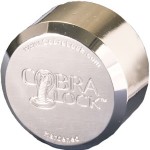Steel beams are integral components in various construction projects, renowned for their robustness, flexibility, and structural support. From towering skyscrapers to bridges spanning great distances, steel beams play a pivotal role in the framework of modern infrastructure. Let’s delve deeper into their significance, applications, and the synergistic relationship they share with geocells.
1. What are steel beams, and why are they important in construction?
Steel beams are structural components crafted from steel, offering superior strength and durability. Their importance in construction lies in their ability to bear heavy loads, providing structural integrity and support to buildings, bridges, and other architectural marvels. Their versatility allows architects and engineers to create expansive spaces without compromising on stability.



2. What are the key applications of steel beams?
Steel beams find widespread use in diverse construction projects, including:
- – Building Construction: They form the skeleton of high-rise buildings, supporting floors and withstanding immense vertical and horizontal pressures.
- – Bridges and Infrastructure: Steel beams are critical in bridge construction, enabling the creation of long spans and supporting the weight of vehicular traffic.
- – Industrial Structures: Factories and warehouses utilize steel beams for their strength and adaptability in accommodating heavy machinery and large open spaces.
- – Residential Construction: From residential homes to apartment complexes, steel beams offer support for various architectural designs.
3. How do geocells complement the use of steel beams in construction?
Geocells, a cellular confinement system made from high-density polyethylene, work synergistically with steel beams in construction. They are used in soil stabilization, erosion control, and reinforcement applications. When integrated with steel beams, geocells act as a protective layer, enhancing load distribution and reducing soil erosion around the beam’s foundations. This integration improves the overall stability and longevity of the structure.
4. What are the benefits of using steel beams in construction?
- – Strength and Durability: Steel beams provide exceptional strength-to-weight ratio, ensuring resilience against heavy loads and adverse conditions.
- – Design Flexibility: Their versatility allows for innovative architectural designs and open floor plans.
- – Sustainability: Steel is recyclable, making it an eco-friendly choice for construction projects.
- – Cost-Effectiveness: Steel beams offer long-term cost savings due to their durability and low maintenance requirements.
Applications and Geocell Integration
Steel beams, in conjunction with geocells, find applications in various scenarios:
- – Road Construction: Geocells reinforce soil beneath roads, while steel beams support bridges and overpasses.
- – Retaining Walls: Steel beams form the framework for retaining walls, while geocells prevent soil erosion.
- – Foundation Support: Geocells improve soil stability around steel beam foundations, reducing settlement and increasing structural integrity.
In essence, steel beams remain indispensable in modern construction, offering strength, adaptability, and longevity. When coupled with geocells, they create a symbiotic relationship that enhances the structural integrity and durability of construction projects.